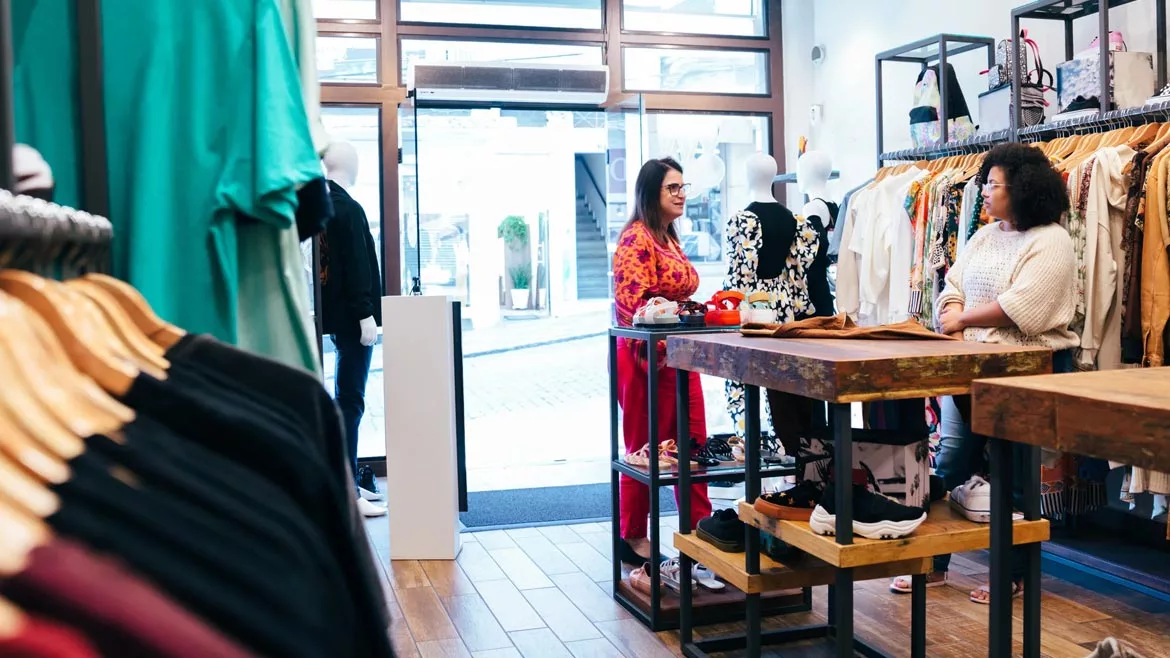Education & Training
Navigating retail security challenges: A comprehensive approach
Protecting retail spaces requires a thorough security approach to keep employees and guests safe.

cokada / E+ via Getty Images
In the dynamic landscape of the retail industry, loss prevention professionals continually grapple with a diverse range of challenges that evolve with the times. From internal threats like employee theft and collusion with organized retail criminals to external challenges such as organized retail crime (ORC), flash mobs and smash-and-dash incidents, retailers face a complex security environment. This article investigates these complicated issues, highlighting the necessity for innovative solutions and an initiative-taking, technology-driven approach to enhance security measures.
Employee theft and collusion
Employee theft and collusion with organized criminal elements present significant risks to retailers. The National Retail Federation's (NRF) 2023 National Retail Security Survey disclosed that approximately one third of retail theft losses were attributed to employee theft, including instances of collaboration with organized retail criminals.
Recent findings reported in a 2023 article in Security Magazine emphasize the urgent need for robust pre-employment screening. This article revealed that ORC leaders strategically recruit employees without criminal backgrounds and target disgruntled individuals within the workforce.
A promising solution gaining traction in the industry is the use of automated behavior assessment software, exemplified by tools that select out undesirable applicants. Traditional background checks, while valuable, have limitations in uncovering behaviors and characteristics indicating a potential for criminal activity. Automated behavior assessments offer a more comprehensive approach, utilizing advanced algorithms to analyze behavioral patterns, personality traits and risk indicators.
The power of automated behavior assessments
These assessments go beyond the scope of traditional background checks by evaluating an applicant's ethical decision-making, honesty and propensity for risky or illegal activities. Scientifically validated methodologies are employed to assess responses to situational judgment scenarios and behavioral questionnaires. This objective measurement helps retailers make informed hiring decisions and identify potential red flags before an individual becomes part of the organization.
By incorporating automated behavior assessments into the pre-employment screening process, retailers can effectively address the issue of collusion with organized retail criminals. The statistic from the National Retail Federation, highlighting the substantial impact of employee theft, underscores the importance of identifying individuals susceptible to participating in such criminal acts.
Furthermore, automated assessments offer a standardized and objective evaluation method, reducing the potential for bias in the hiring process. Human judgment can be influenced by subjective factors, but tools like behavioral selection software provide an unbiased analysis of an applicant's behavioral traits, ensuring fair treatment and consistent evaluations for all candidates.
Incorporating behavior assessment software into the pre-employment screening process serves as a deterrent to potential insider threats. The knowledge that their behavior will undergo thorough assessment may dissuade individuals with criminal intent from applying or attempting collusion. This sends a clear message that retailers prioritize security and are committed to preventing organized retail criminal acts.
It is essential to note that automated behavior assessments should not replace other screening measures but complement them. These assessments should be used in conjunction with thorough checks and interviews to form a comprehensive evaluation of an applicant's suitability. They background investigations to provide an additional layer of information that enhances the overall decision-making process.
A landscape of challenges
Moving beyond internal threats, retailers grapple with a host of external challenges outlined in the NRF Loss Prevention Annual Survey. These challenges include the rise of organized retail crime, flash mobs and riots leading to retail burglaries, as well as smash-and-dash incidents.
Organized retail crime has witnessed a surge driven by various factors such as social unrest, an increase in felony theft limits and the ancillary fallout from the COVID-19 pandemic. ORC groups have become more violent, and political changes in power have added another layer of complexity to the situation.
To combat external threats, retailers are adopting intelligence-gathering methods monitoring social media and implementing physical barriers like nylon mesh, crash-resistant window coverings, bollards and video analytics linked to point of sale with exception-based reporting. Additionally, retailer cooperative groups, such as the Organized Retail Crime Associations and the Coalition of Law Enforcement and Retailers, play a crucial role in information sharing and collaboration.
The rise of flash mobs and riots leading to retail burglaries presents a growing concern. Social media posts during such events attract young opportunists, necessitating well-defined response protocols, intelligence gathering and premises protection measures.
Defined as quick grab-and-go thefts, smash-and-dash incidents are increasing, with social media posts playing a role in attracting young opportunists. Effective investigative methods and premise protection, including the use of technology and physical barriers, are vital in addressing this challenge.
A layered approach
Comprehensive prevention programs are crucial for retailers to address these diverse challenges. Strategies include product placement, securing high-value items and leveraging technology like Electronic Article Surveillance (EAS), cables, drones and RFID. Video surveillance technology with analytics and facial recognition can identify watch list suspects, and GPS tracking on electronics can be activated or attached to deter theft.
Furthermore, it is essential to consider product placement strategies such as keeping high-cost and desirable items away from exits and securing them with proper hardware to slow theft. Displaying items on the floor while keeping stock in lockups and time-delay product safes can be an effective preventive measure.
While Electronic Article Surveillance (EAS), cables and RFID are effective for opportunistic theft, they may not suffice for combating organized retail crime and burglaries. In such cases, video surveillance technology with analytics and facial recognition becomes instrumental in identifying suspects on watch lists, information sharing, enabling immediate intervention or application.
GPS tracking on electronics, when activated or attached and enclosed in packaging, can provide an added layer of security. These measures, combined with a well-thought-out staffing strategy featuring appropriate levels with aggressive customer service skills, contribute to an effective prevention program. However, businesses must remain vigilant for decoys that could distract employees while others engage in shoplifting.
Partnerships between law enforcement and loss prevention through organized retail crime organizations, such as the Coalition of LE and Retailers (CLEAR), play a crucial role in information sharing and collaboration. Additionally, artificial intelligence (AI) can aid in finding intelligence providers capable of navigating the dark and deep web to gather information on scheduled protests and potential targets.
The retail industry is at a critical juncture where initiative-taking measures are essential to navigate the evolving landscape of security challenges. Internal threats like employee theft and collusion demand sophisticated solutions, and automated behavior assessments offer a robust approach to enhancing pre-employment screening. External threats, including organized retail crime and incidents stemming from social unrest, require a comprehensive strategy involving intelligence, collaboration and innovative technology.
In the pursuit of sustaining a safe environment for both employees and customers, the integration of innovative tools and methodologies is no longer a choice but a necessity. Retailers must not only stay abreast of the latest information but also embrace innovative technologies and cultivate collaborative efforts within the industry, law enforcement and legislative bodies. This initiative-taking stance enables retailers to effectively confront the numerous challenges posed by organized retail crime, flash mobs and smash-and-dash incidents. The path forward demands a comprehensive and initiative-taking approach to loss prevention, ensuring the perpetual safety and security of retail establishments in a dynamic and ever-changing environment.
Ultimately, mitigating all factors contributing to inventory shrinkage is imperative for retail establishments. The alternative, as observed in cities like Portland, Oregon, San Francisco, Seattle, and Chicago and others, may result in closures, leaving a void for honest, hardworking citizens who will then have to travel greater distances for their shopping needs.
Looking for a reprint of this article?
From high-res PDFs to custom plaques, order your copy today!









